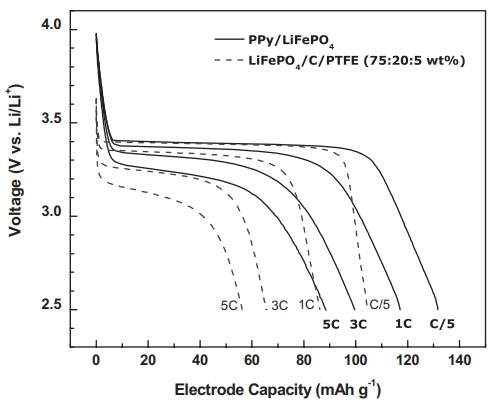Current Li+-ion batteries require electronically conductive additives within the cathode to maintain electrical contact between the small dispersed active cathode particles responsible for the energy storage reactions in the cell. Additionally, they require a polymer binder to hold the conductive additive and active material together. These two additional components—the conductive additive and polymer binder—are electrochemically inert and do not contribute to the energy storage capabilities of the cell. Thus, they add weight to the battery without adding additional functionality.
Researchers at The University of Texas at Austin have developed an integrated cathode design to replace the classic composite cathode that enhances the capacity, cycle life, and rate of discharge/charge of the active cathode material without redesign of other battery components. Thus, this cathode architecture can an act as a drop-in replacement for current lithium-ion battery cathodes and enables the production of lithium-ion batteries that weigh less and discharge/recharge faster than present lithium-ion batteries of the same charge capacity. Alternatively, batteries consisting of this technology can power portable electronic devices for longer periods of time than present lithium-ion batteries of the same weight. LiFePO4 is gaining traction in the electric vehicle community as a low-cost alternative to traditional layered oxide cathodes but has poor electronic conduction that keeps it from realizing its full theoretical capacity. The novel conductive polymer cathode architecture in this technology can be used with an LiFePO4 active material to provide additional electronic pathways and improve the capacity and rate performance of the resulting cell; see Figure 1.

Figure 1. Rate performance of a novel PPy/LiFePO4 cathode architecture compared to a standard LiFePO4 /Carbon Black/PTFE (75:20:5) composite. A C/5 rate corresponds to a 5 hour charge/5 hour discharge; a 1C rate corresponds to a 1 hour charge/1 hour discharge; a 3C rate corresponds to a 20 minute charge/20 minute discharge; and a 5C rate corresponds to a 12 minute charge/12 minute discharge.

